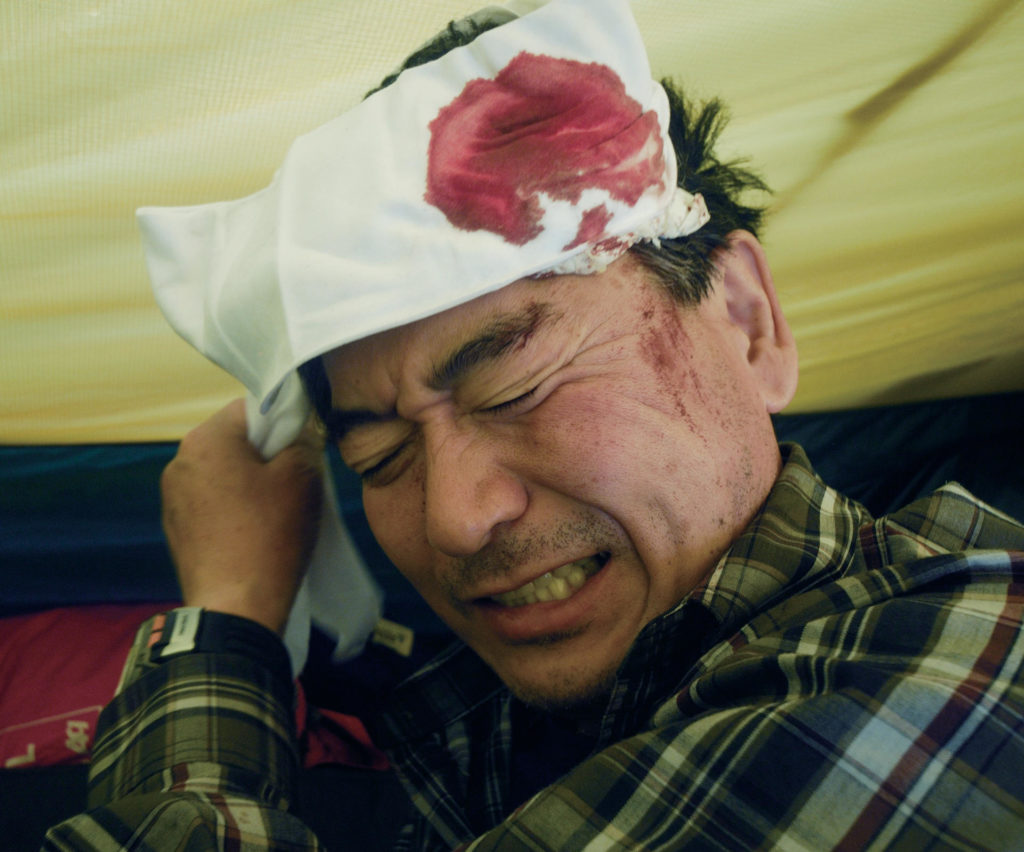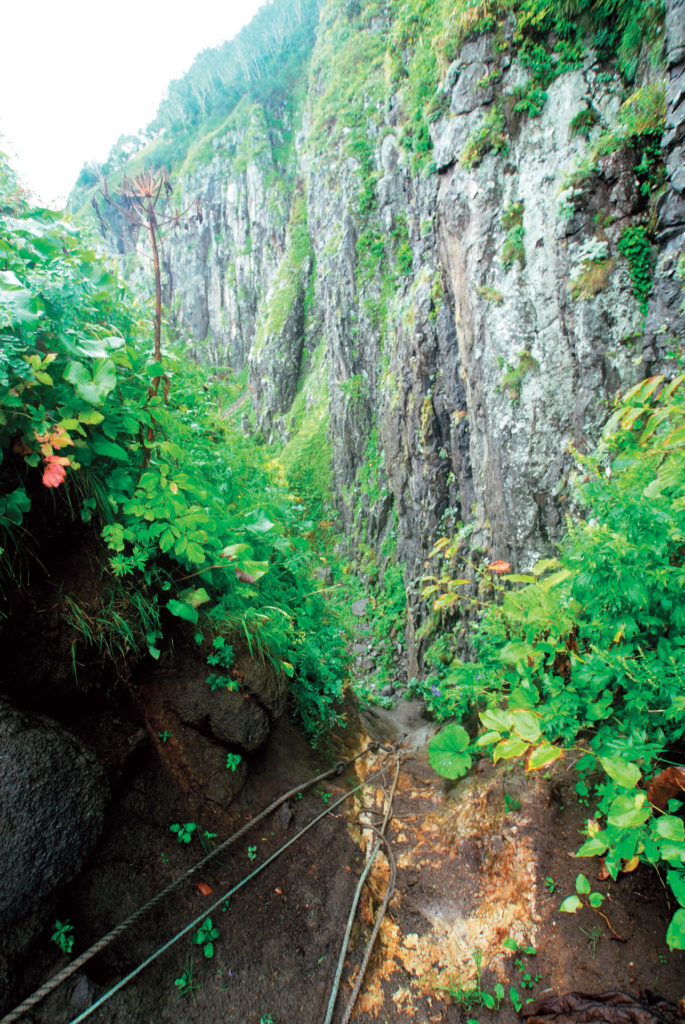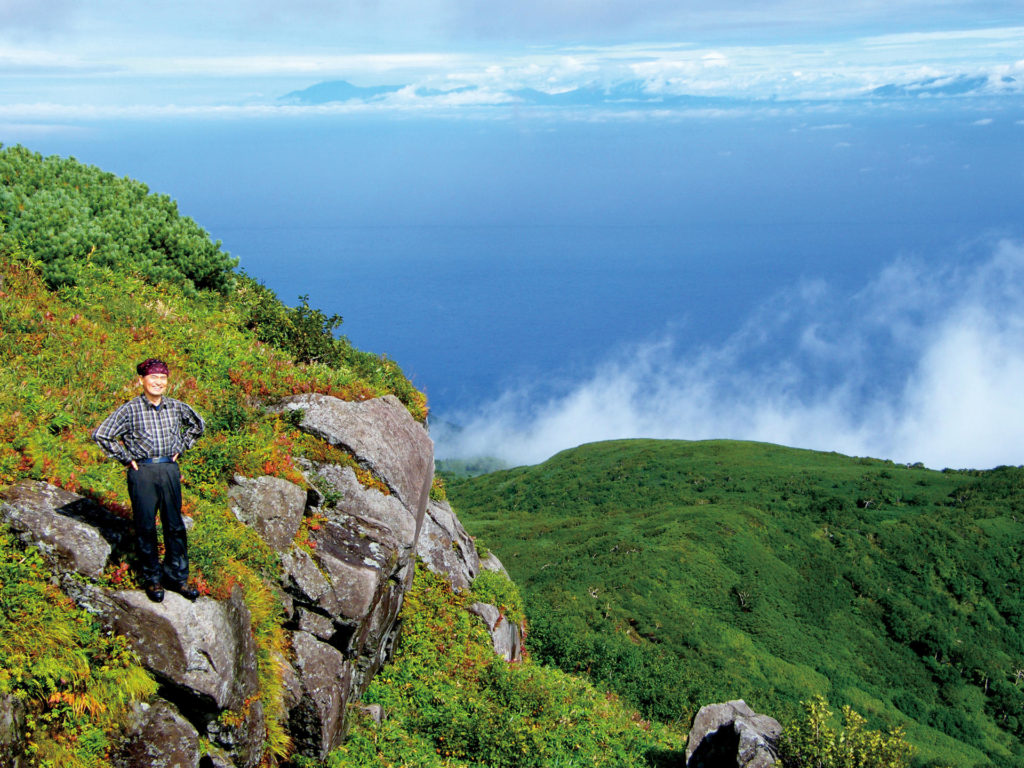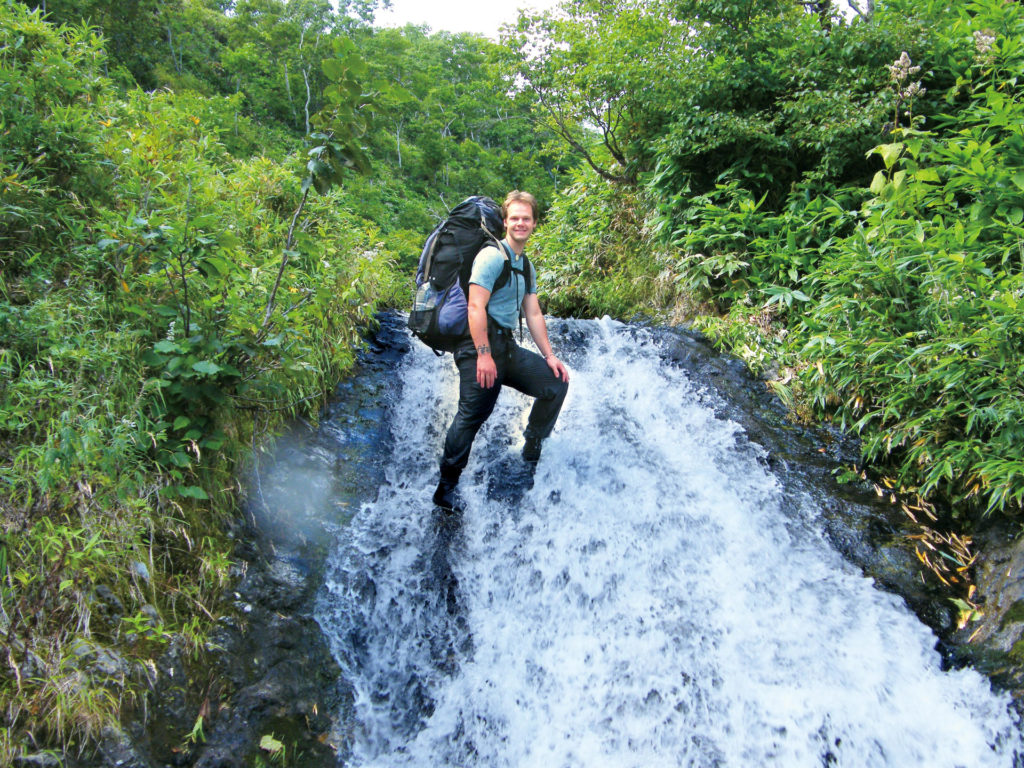“That has blood on it. It must be mine,” says Mr. Watanabe as we pack up our gear on a two-meter square makeshift tent site parched precariously above the Kami-unbe River. I laugh out loud, partly because of the grotesque humor, but mostly a laugh of relief. He had made it through the night, and it finally seemed like he would be OK.

Just 16 hours ago, this 58-year-old real-life superhero slipped while descending a cliff in the remote backcountry of the Shiretoko World Natural Heritage site. The other three members of the hike, all younger than half his age, were looking for an easier way down. Watanabe took his usual route, straight up, down and over anything and everything within the park boundaries.
As I saw him getting ready to start the descent, I said, “You shouldn’t try that!” But he quickly disappeared over the ledge and, just seconds later, I heard the crash. From where I was, I couldn’t see the 10-meter freefall down to the rocks at the base of the cliff, but unfortunately his fall didn’t stop there.
He landed on a 60-degree slope of rocks and continued to bounce down the mountain. In the 200-meter long, 50-meter wide landslide gulch, there was only one large semi-stable rock. Watanabe crashed into it and it stopped his descent.
He wasn’t moving, and my heart skipped a beat. Then my eyes focused on his bloody hands clenched tightly around his head. “He is alive, for now,” I thought as a single-minded sense of purpose hit me like a tsunami. I yelled to Billy, my Hungarian couch-surfing guest who was closer to getting around the cliff when the accident happened. “Get to him as fast as you can without injuring yourself. He will be bleeding a lot. Don’t act surprised.”

A minute later, I heard another huge crash and consecutive bounces. My heart skipped another beat. Then I saw Billy’s backpack bouncing down the gulch and starting a small landslide. I thought I should do the same and get to Watanabe quickly but realized we were still a two-day walk out without a trail and, if even one piece of essential equipment such as a lighter, cell phone, headlamp or stove was broken, it could make this very bad situation even worse. It wasn’t worth the short-term gain.
It took me 10 minutes to get around the cliff and to the edge of the landslide gulch into which Watanabe fell. Even by rough Hokkaido backcountry standards, this was no place I would normally hike. To have a seriously injured person in the middle of it made things all the more complicated.
After slipping several times myself, I finally reached him. He didn’t seem to know where he was or even that he had fallen. He was talking about his sister in heaven, and he had a huge wound on his forehead that covered his face in blood, a partially swollen shut black eye, bloody hands and who knew what else.
As if time wasn’t already of the utmost importance, the sun had quietly set into the Sea of Okhotsk. Billy and I, experienced guides, started checking Watanabe’s condition and talking through our options. First we stopped the bleeding…then started checking vitals. The flesh wounds, while needing stitches, weren’t life threatening. Internal injuries and shock were what worried us.
I asked him to stand up, as I checked for broken bones. He didn’t seem to have any major breaks but most likely fractured ribs and fingers. That was a relief but, as soon as I took my hands off him, unable to stand by himself, he nearly fell further down the landslide. We had to get him out of this area before the twilight ended. It was an uneasy prospect.
Melissa’s cell phone was the only one with reception, but the call wouldn’t go through. Next we checked the map to find it would take us several hours to find a semi-flat area to pitch a tent. Our options were quickly shrinking. Stay the night on this 45 percent grade or hike in the dark through rough terrain with an injured member.
As we were getting Watanabe warm and fed, a thick low cloud rolled in. Watanabe was starting to talk more coherently and said, if it rained, the hike down would be too dangerous because of falling rocks and the rising water level in the stream we planned to follow back to the sea. We had to get to lower elevation as soon as we could.
We followed the bamboo grass along the edge of the landslide. Chances of another serious injury in the bamboo were much less. I scouted out the easiest way down while yelling back directions. In several places the bamboo grass abruptly ended at a cliff. After 30 minutes or so we dropped 200 meters, and I found a safe place to enter the headwaters of the Kamui-unbe River. As the water level rose, the rocks became slippery, and we changed into our felt-bottomed tabi. It was almost 11 p.m.
Watanabe was making good time but sort of throwing one leg in front of the other and had a few slips. He was trying to walk his normal pace, but I had to keep reminding him he wasn’t in his normal condition. We hiked down the river for more than an hour with our headlamps.
We wanted nothing more than a flat place big enough for a tent, but there was nothing close. Another hour later, it started to look as though there may be some chance of finding a site. I dropped my pack and searched around in the bushes, eventually finding somewhere. It was only borderline safe and didn’t look very comfortable, but it was nearly 1 a.m., and we were dead beat.
After we were set for sleeping, I checked Watanabe’s vitals again. He seemed to be doing OK but had a fast pulse, and I was worried about internal injuries. With no other real options, we all quickly went to sleep.
During the night Watanabe was snoring, and it was the only time in my life I was happy to be awaken by such a sound. When we got up at 7 a.m., Watanabe’s first word was “itai” (ouch), and we all chuckled. It wouldn’t be until 5 p.m. when we finally reached the coast.

THE FOUR P’S
For more information on what to do before, during and after an accident, visit www.nols.edu/wmi/. And please note if you head out into the wilderness, you should get some training before you go.
PREVENTION
Given we were off trail, two days walk out and had no reception, nor place for a helicopter to land, Watanabe had no business taking any way but the easiest way down (around) the cliff.
PREPARATION
Take some Wilderness First Aid classes. If you spend a fair amount of time outdoors, you will most likely use it. I don’t know a single person who thought it was a waste of time or money.
PLANNING
Make sure you know emergency numbers to call and that someone knows where you are going and when you plan to return. Also make sure everyone knows the numbers and the way out. Watanabe was our guide.
PACKING
Among other things, your group should have more than one first aid kit, extra food and batteries.

Comments and questions to ryan@idioimagers.org.




